Placing Photography: Reflecting on Recent Curatorial Practices
As part of a series of symposia curated by Meera Menezes and supported by the Anant Foundation for the Arts, the Anant Curatorial Forum organised a panel discussion titled Framing Photographic Practice with curators Tanvi Mishra, Lucas Morin, and Veeranganakumari Solanki, moderated by Rahaab Allana. With conversations in the programme seeking to reflect on contemporary artistic and curation practices, the panel focused on photographic images as a site of producing and preserving histories and cultures while also interrogating the impact of photography on our experiences as we navigate through the ceaseless streaming online landscape.
Allana opened the discussion by asking the panellists how they perceive the dynamics of image production, circulation and interpretation as it evolves in today’s digitally mediated world. More specifically, he also urged them to talk about how they navigate the blurred boundaries between physical and digital spaces within their curatorial practices. Giving the examples of Future Landing, curated by Solanki at the Serendipity Arts Festival 2022, and Moving Definitions, curated by Mishra at the Rencontres d’Arles 2023, Allana inquired about the kind of ethical considerations that the panellists prioritise in their curatorial practices, particularly in the context of digital mediation and the complexities of representation, agency, geopolitics and decolonisation.
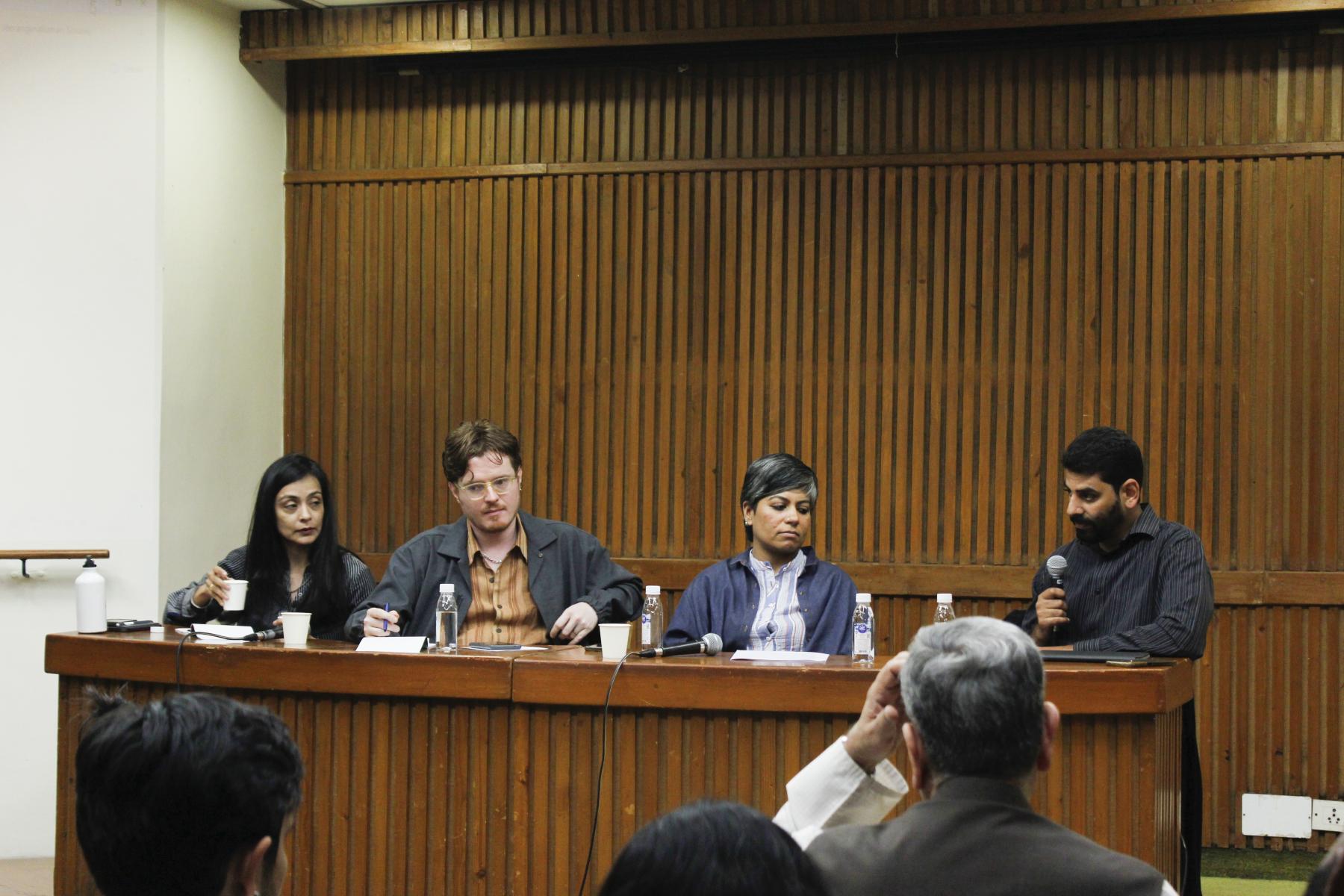
Panel on "Framing Photographic Practice", Anant Curatorial Forum, 2024, courtesy of Anant Foundation for the Arts.
Mishra began by sharing her interdisciplinary practice, navigating between the roles of curator, writer, and educator, influenced by various intersecting worlds and frictions. She emphasised the importance of framing practice outside traditional institutional and academic frameworks, likening her role as a curator to that of a translator between artists and audiences. Drawing inspiration from literary translator Charlotte Collins, Mishra explored the subjective nature of translation and its parallels to curating visual art, focusing on questions of intention, fidelity and collaboration in shaping artistic narratives. She discussed two exhibitions she curated, Moving Definitions and Theatre of Dreams at the BredaPhoto Festival 2022, which focused on the ambiguity of photography in representing truth, the negotiation of evidence in gender-based violence, and the potential for trans-historical and transnational dialogue in promoting inclusive narratives.
Mishra also highlighted the work of artists like Philippe Calia, Felipe Romero Beltran and Nieves Mingueza, who challenge conventional narratives through their work on post-colonial institutions, migrant experiences and gender-based violence respectively. Additionally, Mishra addressed issues of diversity and inclusivity in the arts, advocating for heterogeneity of perspectives and challenging homogenisation within underrepresented groups. She spotlighted artists like Samantha Box and Vishal Kumaraswamy, who interrogate notions of homeland, identity and representation, particularly in Caribbean and Dalit communities. Mishra ended her presentation by stating that her practice centres on a critical interrogation of power dynamics, visibility and authorship within artistic collaborations, emphasising the importance of diverse narratives and resistance to dominant cultural frameworks.
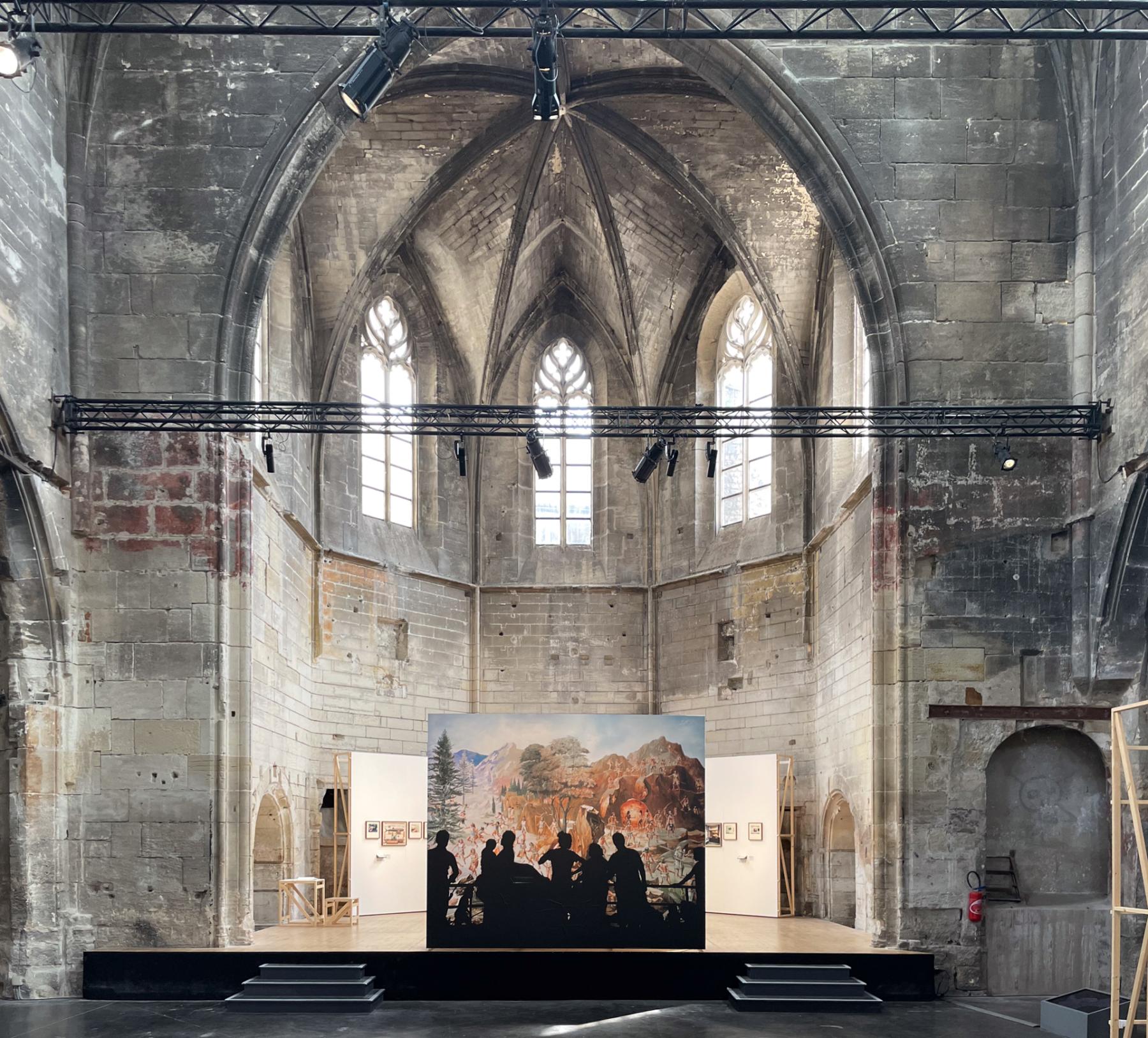
Installation view of The Ajaib Ghar Archive by Philippe Calia, Moving Definitions, 2023, courtesy of Tanvi Mishra.
Morin began his presentation with a confession—that he possesses limited knowledge about photography. He entered the art world in 2010, encountering a landscape shaped by spatial concepts like the "Global South" and challenging canonical perspectives prevalent in France. Transitioning to his role at Art Jameel, a nonprofit visual arts institution in Dubai, Morin discussed the centre’s institutional focus on regional art, emphasising fluidity over strict definitions of art and highlighting the collaborative nature of his curatorial work within the institution.
Morin then delved into three institutional projects at Art Jameel, starting with Guest Relations (November–April 2024), co-curated by Morin and Murtaza Vali, an exhibition exploring the tourism industry through the lens of hotels. Morin reflected on the challenges of framing the geographic scope and the importance of openness and curiosity in curatorial practice. He also briefly discussed At the Edge of Land (November 2023–April 2024) at the Hayy Jameel, an exhibition examining landscape, extraction and trade that focused on open-ended questions rather than providing answers.
Finally, Morin discussed Proposals for a Memorial to Partition (June 2022–February 2023), curated by Murtaza Vali. He highlighted the propositional nature of the exhibition, where artists offered new perspectives on Partition without prescribing a fixed narrative. Morin spoke about his personal connection to the project and its applicability to colonial histories, emphasising the importance of hosting such exhibitions in Dubai, where their audience is predominantly South Asian. Morin concluded by underscoring the exhibition's adaptability and ongoing relevance to shifting historical and political landscapes.
Solanki, in her concise presentation, focused on the expansion of her curatorial practice through three distinct projects. Drawing from Vilém Flusser’s seminal work Towards a Philosophy of Photography (1984), she emphasised on the significance of images in both the public and private realms. Solanki, in 2019, began thinking critically about the medium and started engaging artists in discussions about imagery and mediums. In 2020, amidst the pandemic, she curated the virtual space and exhibition Future Landing, relinquishing control to foster individual experiences.
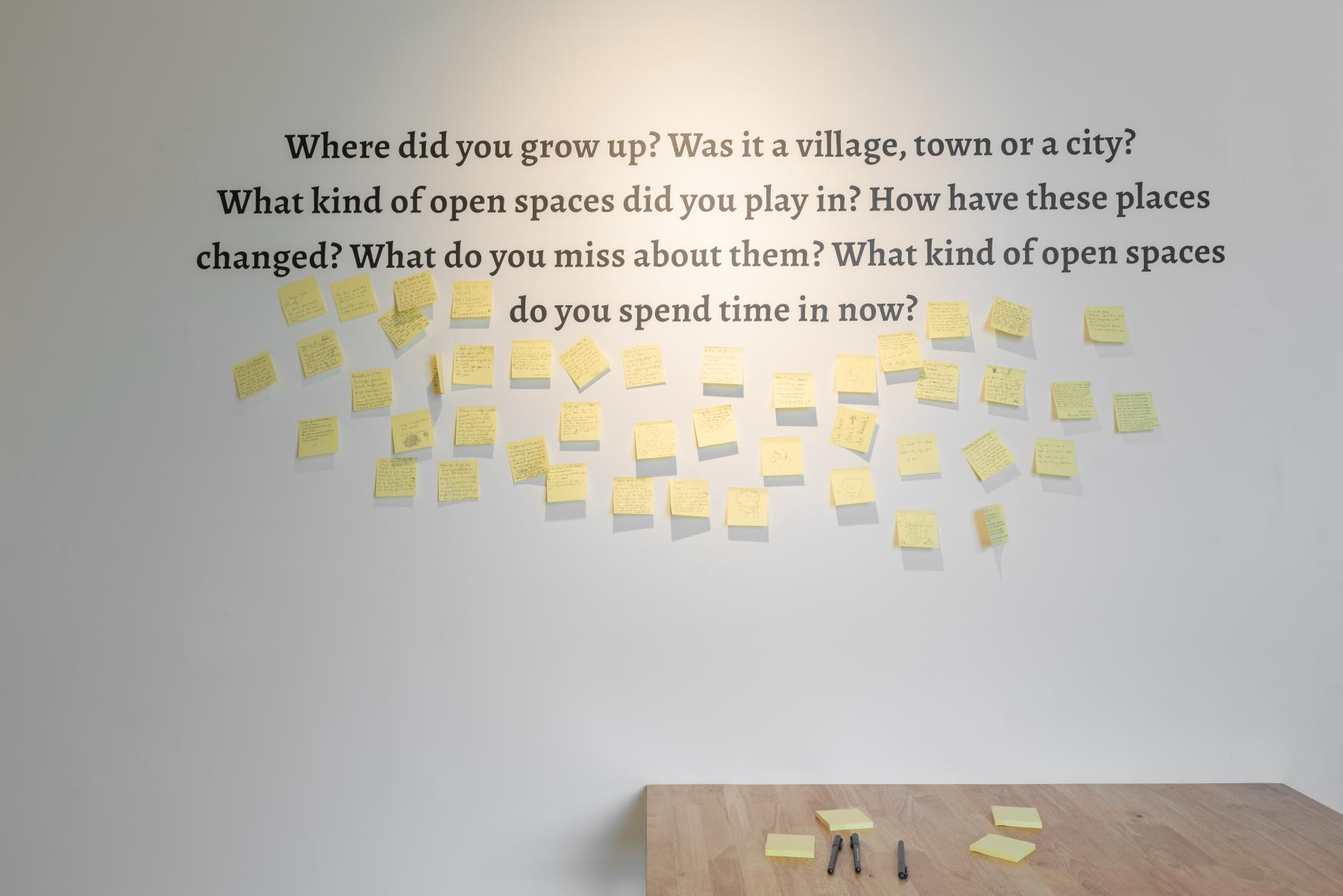
"The Kathmandu Valley Urban Project" by Nepal Picture Library, Future Landing, 2022, courtesy of Serendipity Arts Foundation.
Future Landing facilitated unique interpretations, exemplified by Farah Mulla's interactive work at the physical iteration of the exhibition at the Serendipity Arts Festival in 2022. It engaged viewers as active participants, shifting from passive observation to dynamic engagement. This thematic thread continued in her 2023 exhibition, Synaesthetic Notations, where visuals and sound intertwined to evoke subconscious memories, with time playing a crucial role in altering experiences throughout the day. In essence, Solanki’s curatorial practice explores the intersections of arrival, departure, memory and future sensory experiences, bridging artists' intentions with visitor encounters.
In response, Allana delved into the complexities surrounding the physicality of artworks and their broader contextual significance. He spoke about the role of museum spaces in facilitating understanding of fraught circumstances, particularly in the display of pieces addressing Partition narratives. Lastly, Allana addressed the multifaceted challenges faced by curators, emphasising their role in navigating the political, social and emotional dimensions of their work, including the ethical considerations of artistic intervention.
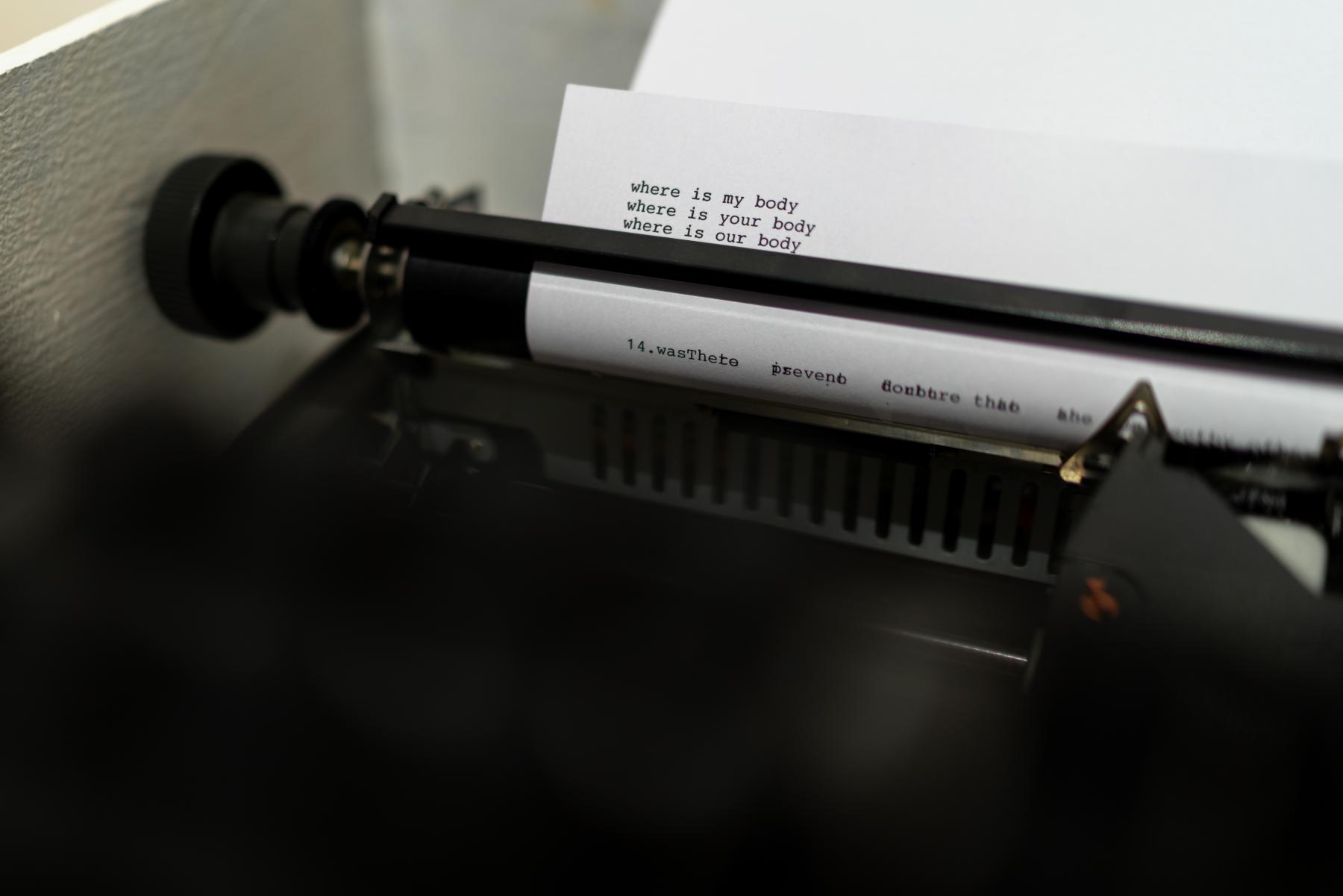
"Where is my body" by Anuskha Trivedi, Future Landing, 2022, courtesy of Serendipity Arts Foundation.
Mishra explored how photography captures abstract concepts like absence and bureaucracy, questioning its ability to encapsulate them. She further reflected on the responsibility of representing regions or identities, wondering if inclusivity means moving beyond identification markers. Ultimately, she advocated for a transdisciplinary approach to art, responding to the complexity of the world. Morin discussed the Jameel exhibitions' specificity, noting the difficulty in transplanting them elsewhere due to contextual nuances.
While recognising benefits for broader audiences, Morin stressed the significance of preserving unique contexts and collaborating with creators for recontextualisation when needed. The discussion’s leitmotif, if one can call it that, was how essential it is to acknowledge the complexity inherent in societal affiliations, extending even to the confines of a single room. Embracing dialogue and openness to diverse perspectives is paramount, as evidenced by recent shifts in art spaces and beyond. This becomes crucial to resist polarisation, recognising it as a tactic of the past rather than a solution for the future.
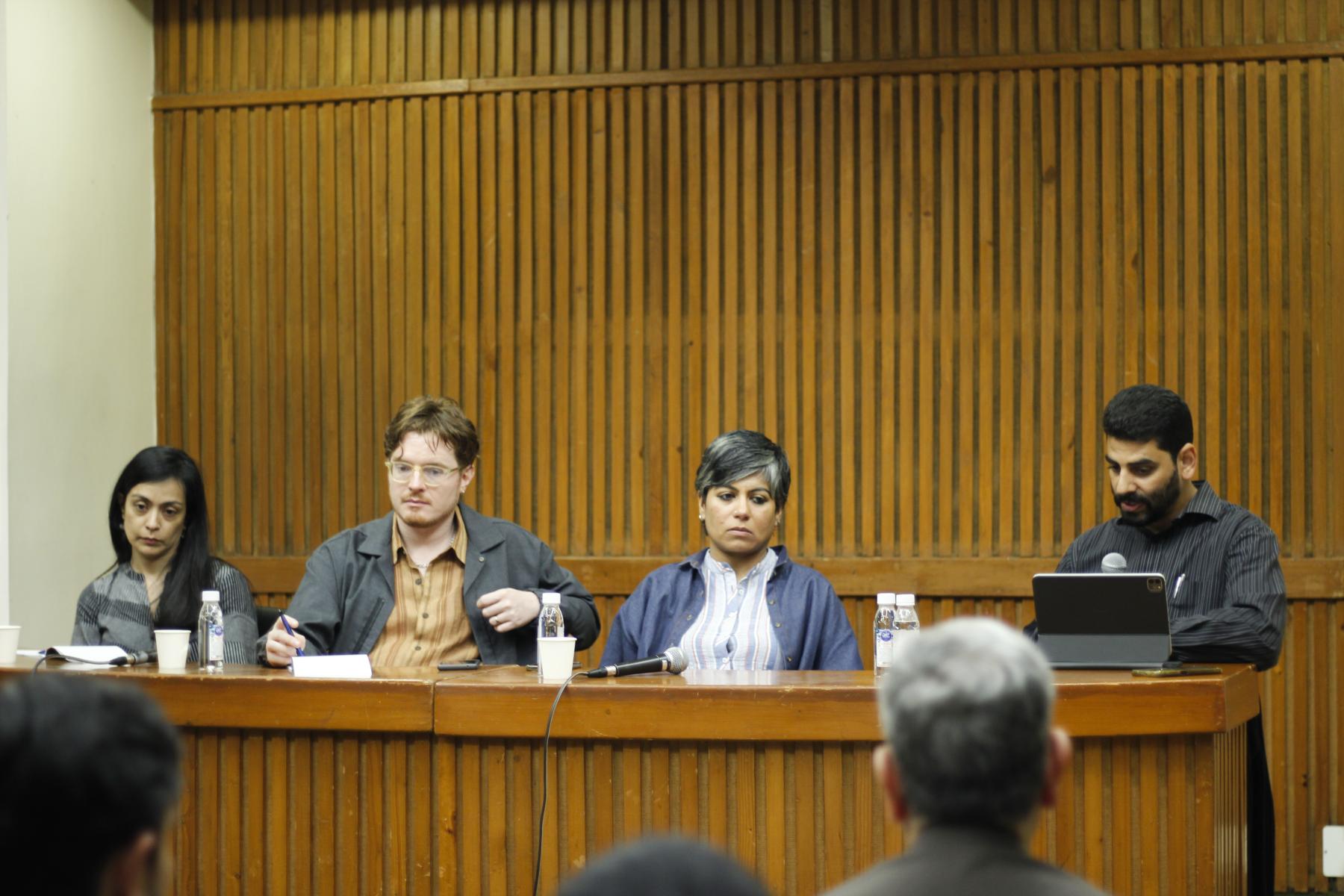
Panel on "Framing Photographic Practice", Anant Curatorial Forum, 2024, courtesy of Anant Foundation for the Arts.
To learn more about other such colloquiums, read Saloni Jaiwal’s coverage of the panel Art: An Agent of Change and Mallika Visvanathan’s piece on the Curators’ Roundtable, both of which were organised as part of the India Art Fair 2024. Also read Pamudu Tennakoon’s essay on the panel Seeding a Grove of South Asian Solidarities at Colomboscope 2024. You can also revisit ASAP | art’s public programming, including Arundhati Chauhan’s discussion with Tapti Guha-Thakurta, Vazira Fazila-Yacoobali Zamindar and Shuddhabrata Sengupta on How Secular is Art?.




